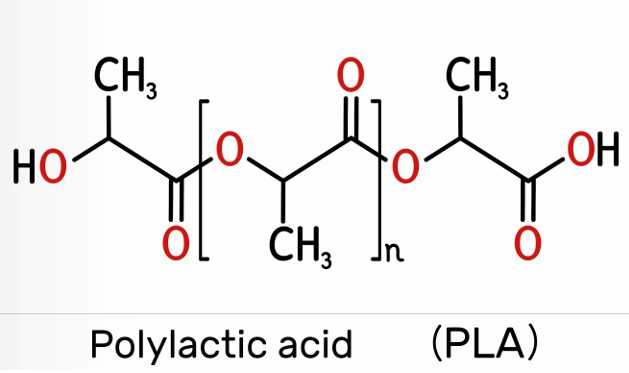Acid Functional Polymers & Salts
- CAS: 25087-26-7
- Molecular Weight: 86.0892
- Molecular Formula: C4H6O2
- CAS: 25322-63-8
- Molecular Formula: (C6H11NO)n
- CAS: 27754-99-0
- Molecular Weight: 108.0331
- Molecular Formula: C2H5O3P
- CAS: 28210-41-5
- Molecular Weight: 184.2123
- Molecular Formula: C8 H8 O3 S
- CAS: 30875-88-8
- Molecular Weight: 103.11976
- Molecular Formula: C4H9NO2
- CAS: 82063-35-2
- Molecular Weight: >200.000
- CAS: 9002-97-5
- Molecular Weight: 130.09800
- Molecular Formula: C2H3NaO3S
Introduction
Acid functional polymers and salts refer to polymers or salts containing acid functional groups. Common acidic groups are carboxy (-COOH), hydroxy (-OH), sulfo (-SO3H), nitro (-NO2), thiohydroxy (also known as mercapto or sulfhychyl, -SH) and so on. Polymers with different functional groups have different chemical properties and can be used in many fields. For example, acid-functional polymers have broad application prospects in the fields of self-assembly, biomedical polymers, water treatment, ion exchange resins, chelating agents, immobilized catalysts, and dyes.

Functional groups are atoms or groups of atoms that determine the chemical properties of organic compounds. For example, polymers containing carboxyl groups (-COOH) can be used as thickeners for cosmetics, moisturizers for cataplasms, emulsifiers, suspension stabilizers for suspended solids, gel bases for batteries, and the like. Zhao et al. successfully prepared microspheres with carboxyl groups on the surface by emulsion polymerization using sodium dodecylbenzenesulfonate (SDBS) as emulsifier, potassium persulfate (KPS) as initiator, styrene (St) and acrylic acid (AA) as monomers.[1] The polymer microspheres have abundant surface carboxyl groups and good dispersibility. Since the surface carboxyl groups can undergo various reactions, the polymer microspheres can be directly used or further linked with ω- amino carboxylic acid to obtain carboxyl microspheres with long arms for the development of diagnostic reagents.
Based on the research on the degradation of phenoxy resins, the research group of Professor Robert of Princeton University has developed a series of degradable polyhydroxy (-OH) polymers with excellent thermal and mechanical properties, which proposed a new idea for the preparation of recyclable plastics.[2] Xu et al. used glycidyl methacrylate ester (RAG) and acrylic rosin with two hydroxyl groups and two double bonds as cross-linking agents to prepare hydroxyl (-OH)-containing rosin-based polymer microspheres with styrene, and applied it to adsorb benzoic acid solution.[3]
Ding et al. synthesized a zwitterionic copolymer containing sulfo group (-SO3H) (P(AM-DMAPS)). P(AM-DMAPS) was expected to obtain important applications in oilfield exploitation, water treatment, textile, medicine, turbulent drag reduction, colloid protection, etc.[4] Zhu et al. used fuming nitric acid to synthesize polynitrostyrene (containing -NO2) in one step, which can be used as an intermediate for various functional polymers.[5] In addition, as a new type of mucoadhesive material, the free sulfhydryl group of sulfhydryl (-SH) polymer forms a disulfide bond with the cysteine of muco-mucosal layer glycoprotein under physiological conditions.[6] Through the close combination of covalent bonds and mucosa, thiol polymers can prolong the residence time of drugs in the body, increase the local drug concentration, and promote drug absorption. Therefore, thiol polymers are excellent carriers for oral administration.
If you are interested in our acid functional polymers & salts, please contact us immediately!
References
- Zhao, R.J. et al. Preparation of nano-microspheres with carboxyls on spherical surface by emulsion polymerization. New Chemical Materials. 2010, 38(1).
- Suong, T. et al. Depolymerization of Hydroxylated Polymers via Light-Driven C-C Bond Cleavage. Journal of the American Chemical Society. 2021, 143(31): 12268-12277.
- Xu, J.B. et al. Preparation, characterization and adsorption performance of rosin based polymer microspheres with hydroxyl groups. Chemical Industry and Engineering Progress. 2017, 36(6).
- Ding, W. et al. Synthesis of zwitterionic copolymer containing sulfobetaine groups. Science & Technology in Chemical Industry. 2010, 18(05): 15-19.
- Zhu, R. et al. Synthesis of polynitrostyrene by one-step method I. Effects of polymerization process, solvent polarity and sulfuric acid content. China Synthetic Resin and Plastics. 2014, 31(4): 9.
- Ashwini, M. et al. Improving oral bioavailability of acyclovir using nanoparticulates of thiolated xyloglucan. International Journal of Biological Macromolecules. 2016, 89: 689-699.























